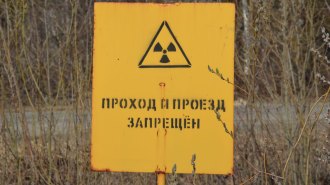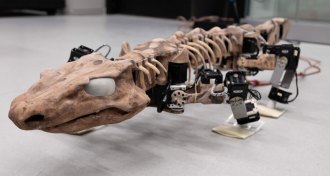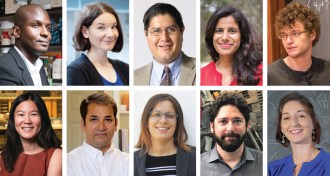Search Results

Radioactive Cloud Linked to Russia
This guide, based on the Science News article “Radioactive cloud traced to Russia,” asks students to evaluate evidence, explore global monitoring networks and use an interactive simulation to learn about elements, ions and isotopes.
Atoms, ions and isotopes, oh why?
Students will use a PhET Interactive Simulation to understand the definitions, similarities and differences of elements, ions and isotopes. Then students will explore the Science News journalism archive to find current science research examples that apply these concepts.
Move into a hermit crab’s shell
These discussion prompts connect concepts including energy, competition, adaptation, speciation, natural selection and chemical and physical changes to a real-world example.

Earth’s Inner Core is Relatively Young
This guide introduces students to the history and current state of Earth’s magnetic field, the structure of Earth’s interior and concepts related to energy transfer.
The Periodic Table: A nuclear view
Students will learn how interactions among the protons and neutrons in the atomic nucleus affect the properties and stability of chemical elements, and how these properties could inform the creation of future elements.
Journey to the center of the Earth
After thinking through concepts related to processes in the Earth's core, students will use these prompts to create a diagram of the geodynamo.
Assessing the age of Earth’s core
Students will answer questions based on the Science News article "Earth's inner core is relatively young."

Robot Re-creates a Tetrapod’s Moves
This guide explores how scientists combine approaches from different scientific fields to study ancient locomotion.
Tracing tracks and guessing gaits
Students will use what they know about physics and human range of motion to analyze classmates’ trackways and infer how their classmates made the tracks.
Explore volcanic eruptions, and their devastating aftermath
These discussion prompts explore volcanic explosivity and collapse, the ecosystem and health effects of eruptions and how to keep people safe during natural disasters.

SN 10: Scientists to Watch
This guide introduces students to some of the scientists featured on the SN 10: Scientists to Watch list. Students can explore the questions that motivate these scientists and their myriad career paths.
The SN 10 Game
Students will come up with a Jeopardy! style game or use a game provided to better understand the character traits, personality qualities and career paths of the SN 10: Scientists to Watch.